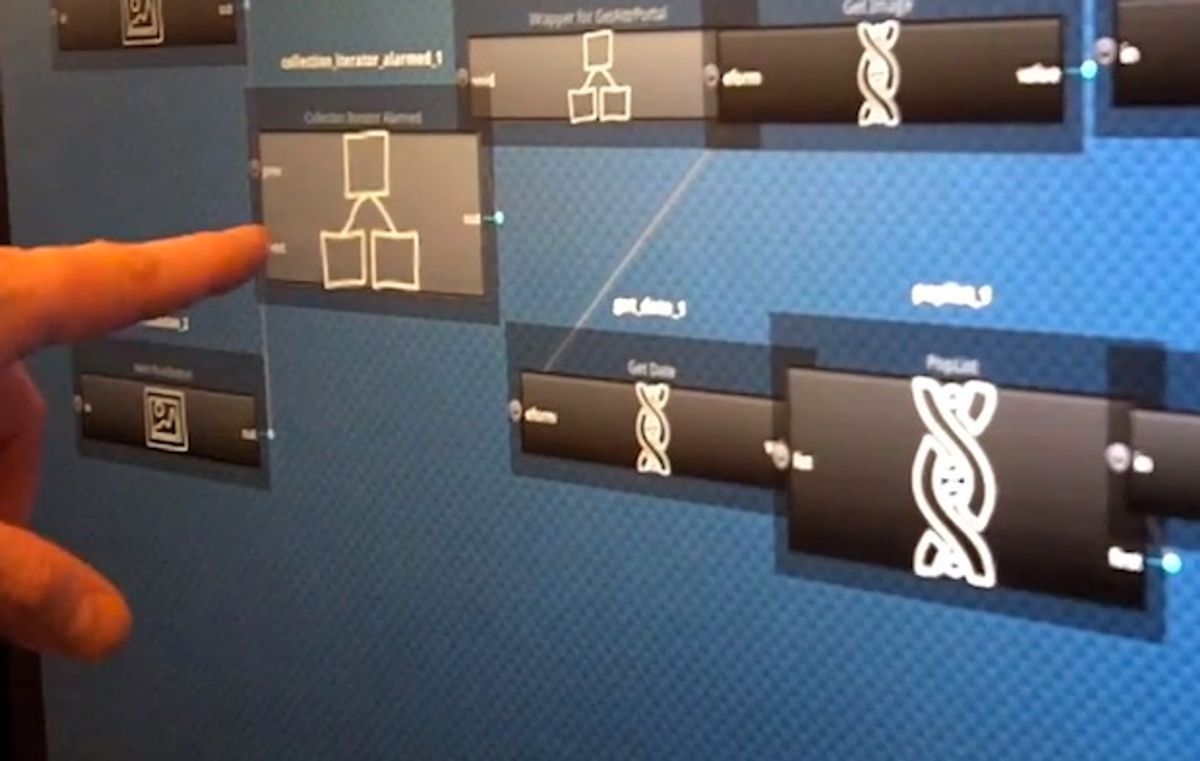Just when you thought you knew what mobile computing meant—smart phones, of course, and more recently, tablet computers—the definition has changed. It now includes just about anything connected to the Internet that you can pick up and move. Unless it’s a full-fledged computer, then it’s not mobile. Even it it is. I think.
To judge by Demo Mobile 2013, held this week in San Francisco, just about everything is a mobile device: smart watches—a new one is announced every week, it seems—Google Glass, a smart thermometer, and a web-conferencing system in a puck. (The latter two were announced here at the conference.)
These devices are, presumably, already useful doing whatever it is they are individually designed to do. But what would happen if they could all easily connect up and do things together? In a science fiction movie, they would likely take over the world. But—a more likely scenario—in the hands of creative engineers, hobbyists, and even kids, they could do some really cool and useful things that we have yet to imagine.
That’s what Mickey McManus thinks. He’s CEO of MAYA Design, a design and research lab in Pittsburgh. ("MAYA" stands for Most Advanced Yet Acceptable.) He and his colleagues want to make it easier to hook up disparate smart devices. A lot easier. So easy in fact that a ten-year-old could do it. They’ve developed a visual programming tool called MakerSwarm. In MakerSwarm, a mobile device is simply a box with inputs and outputs—to connect that device to another one, a programmer can simply draw a line between the appropriate input and output. If there’s a format mismatch that would prevent the two devices from talking to each other, MakerSwarm searches software libraries to determine if a chunk of conversion code already exists; if so, the programmer can simply patch it in. In a hectic four-minute demonstration on the Demo Mobile stage, McManus used MakerSwarm to connect a phone to a camera to a watch to a drone helicopter to an alarm clock. A tweet to the watch controlled the drone, and the camera took a photo when the phone was in a certain position and tweeted it—or something like that, it was easy to lose track. [McManus did a slightly simpler demo for Spectrum, see the video, above.]
Which was McManus’s point. “The idea,” he says, “is casually wiring up atoms and bits. We hope at the end of the day this allows people to dream bigger, and then anybody can be an inventor and make things happen in the Internet of Things"—which McManus says will reach a trillion nodes within five years.
Follow me on Twitter @TeklaPerry.
Tekla S. Perry is a senior editor at IEEE Spectrum. Based in Palo Alto, Calif., she's been covering the people, companies, and technology that make Silicon Valley a special place for more than 40 years. An IEEE member, she holds a bachelor's degree in journalism from Michigan State University.



